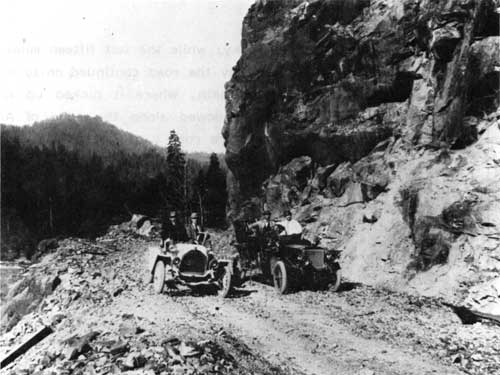Historic Resource Study, Crater Lake National Park, Oregon, 1984
VIII. Roads of Crater Lake National Park
B. Entrance Road and Bridges
2. A New Road to the Rim
By October 1904 a new road was in process of construction on the south side of the high ridge running southwesterly from the summit of Mount Mazama. On the north side of the ridge was the bed of the old road, which was proving unsatisfactory because
the ground over which this road runs before reaching the foot or base of the Crater Lake mountain proper, is a succession of hills and hollows, is in many places rocky and rough and leads down steep hills in places when, if possible it should be ascending in order to reach the highest possible elevation before starting up the main mountain. . . .[11]
The section of new road being constructed leading from the old road near the Whitehorse entrance up the south side of the summit would have a much more gradual ascent.
In his monthly letter to the secretary of the interior providing details on the management of the park from June 30, 1904, to the close of the tourist season of 1905, Superintendent Arant stated that the new road from the head of Annie Creek to the caldera rim had been completed, its steepest grade being one of 10%. The park was now working on construction of a new road from Annie Creek to the Whitehorse entrance. The superintendent still becried the park’s primitive condition, resulting from its mountainous character, distance from settlement, lack of improvements prior to becoming a national park, and small appropriations since that time. [12]
In 1907 Superintendent Arant noted that there were four roads in the reserve, whose upkeep involved only what was necessary to place them in reasonably fair condition:
In regard to the matter of improvements and extension of roads in the park it is proper to state that in the Spring of each year the roads are found to be washed out in many places, and deep ruts are cut by the heavy rains and waters of the melting snows and obstructed by fallen trees, logs, stones and brush, and the repairing alone requires a considerable amount of labor. In many places the roads are in bad condition by being partially overgrown by brush, which should be cut away and the roads otherwise improved. [13]
***previous*** — ***next***


